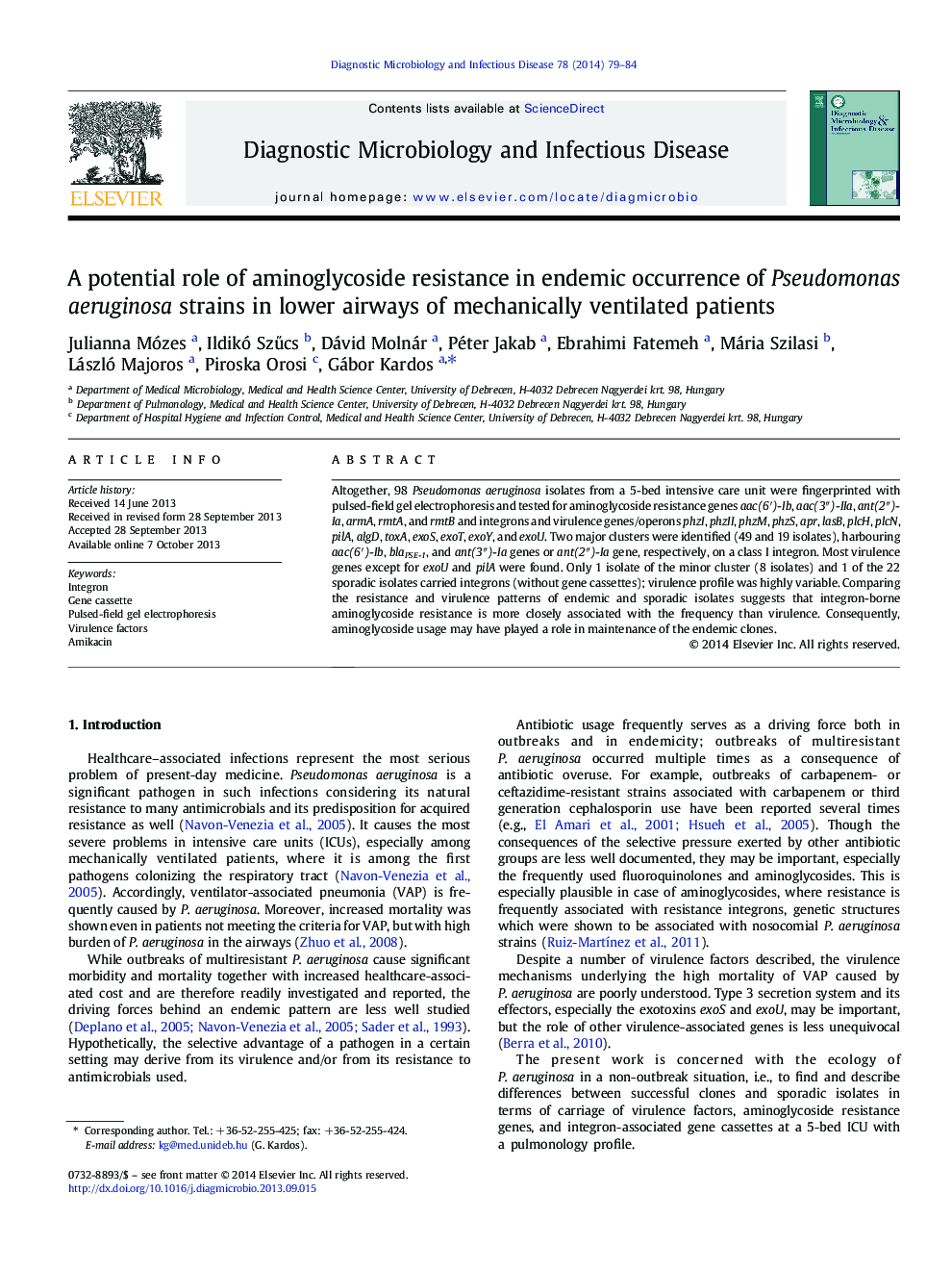| Article ID | Journal | Published Year | Pages | File Type |
|---|---|---|---|---|
| 3347123 | Diagnostic Microbiology and Infectious Disease | 2014 | 6 Pages |
Altogether, 98 Pseudomonas aeruginosa isolates from a 5-bed intensive care unit were fingerprinted with pulsed-field gel electrophoresis and tested for aminoglycoside resistance genes aac(6′)-Ib, aac(3″)-IIa, ant(2″)-Ia, armA, rmtA, and rmtB and integrons and virulence genes/operons phzI, phzII, phzM, phzS, apr, lasB, plcH, plcN, pilA, algD, toxA, exoS, exoT, exoY, and exoU. Two major clusters were identified (49 and 19 isolates), harbouring aac(6′)-Ib, blaPSE-1, and ant(3″)-Ia genes or ant(2″)-Ia gene, respectively, on a class I integron. Most virulence genes except for exoU and pilA were found. Only 1 isolate of the minor cluster (8 isolates) and 1 of the 22 sporadic isolates carried integrons (without gene cassettes); virulence profile was highly variable. Comparing the resistance and virulence patterns of endemic and sporadic isolates suggests that integron-borne aminoglycoside resistance is more closely associated with the frequency than virulence. Consequently, aminoglycoside usage may have played a role in maintenance of the endemic clones.
